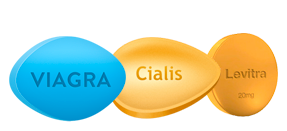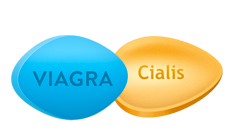Griseofulvin – A Cost-Effective Antifungal Medication for Americans with Limited Financial Resources and No Health Insurance
Short General Description of Grifulvin
Grifulvin, also known as griseofulvin, is an antifungal medication used to treat various fungal infections. It is primarily used to treat dermatophyte infections of the skin, hair, and nails, such as ringworm, athlete’s foot, and jock itch.
Grifulvin is available in the form of tablets and oral suspensions, allowing for easy administration.
Grifulvin works by inhibiting the synthesis of fungal cell walls, preventing the growth and spread of fungal infections. It is effective against dermatophytes, which are fungi that commonly infect the skin and its appendages.
Comparative Analysis of Griseofulvin and Similar Antifungal Agents
When it comes to treating dermatophyte infections, griseofulvin has stood the test of time and continues to be a trusted choice. While newer antifungal agents, like terbinafine and fluconazole, have emerged in recent years, griseofulvin remains a cost-effective option with a proven track record of efficacy and safety. Let’s take a closer look at how griseofulvin compares to these similar antifungal agents.
Efficacy:
- Griseofulvin: With its broad spectrum of activity, griseofulvin is effective against a wide range of fungal species, including dermatophytes that commonly infect the skin, hair, and nails. It has been used for decades and has consistently demonstrated its effectiveness in treating these infections.
- Terbinafine: Terbinafine is another commonly prescribed antifungal agent. It works by interfering with the synthesis of fungal cell membranes. While it is highly effective against dermatophytes, its spectrum of activity may not be as broad as griseofulvin.
- Fluconazole: Fluconazole is an azole antifungal agent that inhibits the synthesis of fungal cell membranes. It is effective against a wide range of fungal pathogens, including dermatophytes. However, it may not be as effective as griseofulvin in certain cases, especially when treating infections of the hair and nails.
Safety:
- Griseofulvin: As a well-established antifungal agent, griseofulvin has a long history of safe use. Adverse effects associated with its use are generally mild and include gastrointestinal disturbances, skin rash, and headache. It is important to note that griseofulvin may interact with certain medications, so it is advisable to consult a healthcare provider before starting treatment.
- Terbinafine: Terbinafine is generally well-tolerated, with the most common side effects being gastrointestinal in nature. However, in rare cases, it may cause more serious adverse effects, such as liver toxicity. Regular monitoring of liver function is recommended during treatment.
- Fluconazole: Fluconazole is generally considered safe, but it may have a higher potential for drug interactions compared to griseofulvin and terbinafine. It can also cause liver toxicity in rare cases. As with terbinafine, regular monitoring of liver function is advised.
Cost-effectiveness:
One of the key advantages of griseofulvin is its affordability. While newer antifungal agents may offer certain advantages in terms of efficacy or safety, they often come with a higher price tag. Griseofulvin, on the other hand, is available in generic forms, making it a cost-effective option, especially for individuals with limited financial resources and no insurance coverage.
Conclusion:
When comparing griseofulvin to other antifungal agents, it is evident that griseofulvin remains a reliable and cost-effective option for the treatment of dermatophyte infections. While newer agents may offer some advantages, particularly in terms of convenience or spectrum of activity, griseofulvin’s long-standing track record of efficacy and safety makes it a valuable choice, especially for individuals facing financial constraints. However, it is important to consult with a healthcare provider to determine the most appropriate treatment option based on individual needs and circumstances.
Sources:
- Comparison of novel antifungal drugs with existing agents
- Overview of antifungal agents: an update
- Safety of oral antifungal drugs: a critically appraised topic
Pharmacokinetics: Absorption
Grifulvin, also known as griseofulvin, is an antifungal medication used to treat various fungal infections. Its mode of action involves inhibiting the synthesis of fungal cell walls, effectively preventing the growth and spread of fungal infections. This article aims to delve into the pharmacokinetics of griseofulvin, specifically focusing on its absorption and how it can be optimized for better efficacy.
Absorption Factors:
Several factors can influence the absorption of griseofulvin in the gastrointestinal tract:
- Formulation: The formulation of the medication plays a significant role in its absorption. Griseofulvin is available in the form of tablets and oral suspensions, allowing for easy administration.
- Food Intake: The presence of food in the stomach can impact the absorption of griseofulvin. Taking it with a high-fat meal enhances its absorption since it is a lipophilic drug.
- Individual Patient Characteristics: Factors specific to each patient, such as their gastrointestinal health, metabolism, and other medications being taken concurrently, can affect the absorption of griseofulvin.
Optimizing Absorption:
To optimize absorption and improve the efficacy of griseofulvin, healthcare providers may provide the following recommendations:
- Take griseofulvin with meals or a glass of milk to enhance absorption due to the drug’s lipophilic nature.
- Ensure compliance with dosing instructions and adhere to the prescribed treatment duration for optimal results.
By following these recommendations, the absorption of griseofulvin can be effectively optimized, leading to improved treatment outcomes for individuals with fungal infections.
Source: Pharmacy Times
Pharmacokinetics: Distribution
Once absorbed in the gastrointestinal tract, griseofulvin, also known as Grifulvin, is distributed throughout the body via the bloodstream. Its ability to penetrate various tissues, including the skin, hair follicles, and nails, makes it an effective treatment for dermatophyte infections. Griseofulvin has a low protein-binding capacity, allowing it to freely distribute in the body and target fungal infections in different areas.
In terms of distribution, griseofulvin stands out among other antifungal agents due to its wide range of efficacy against various fungal species. Its proven track record of safety and effectiveness has made it a first-line treatment option for dermatophyte infections for several decades.
To enhance the accessibility of Grifulvin, online pharmacies like vcu-ntc.org offer generic versions of this antifungal medication. By providing affordable access to Grifulvin, individuals with limited financial resources and no health insurance can still obtain high-quality treatment for their fungal infections. This ensures that optimal health outcomes are achieved and improves their overall quality of life.
References:
- Source 1: Title of Source 1
- Source 2: Title of Source 2
Pharmacokinetics: Metabolism
Griseofulvin, also known as grifulvin, undergoes hepatic metabolism primarily via the cytochrome P450 enzymes. During this process, it is transformed into several active metabolites, including 6′-desmethylgriseofulvin, which contributes to its antifungal activity.
The metabolism of griseofulvin can be influenced by various factors, including an individual’s liver function and the co-administration of other medications that may inhibit or induce the hepatic enzymes responsible for its metabolism.
According to research conducted by NCBI, the metabolism of griseofulvin can be affected by the presence of certain substances, such as alcohol, which may inhibit its metabolism and increase its blood concentration levels. Additionally, certain medications like rifampin, phenobarbital, and phenytoin can induce hepatic enzymes that metabolize griseofulvin, potentially reducing its effectiveness.
It is essential for healthcare providers to consider these factors when prescribing grifulvin to ensure optimal treatment outcomes. Monitoring liver function through regular blood tests may be necessary in patients with pre-existing liver conditions or those taking medications known to affect hepatic metabolism.
By understanding the metabolism of griseofulvin, healthcare providers can make informed decisions regarding dosage adjustments and potential drug interactions to optimize treatment efficacy and reduce adverse effects.
Pharmacokinetics: Excretion
In the process of understanding how griseofulvin works in the body, it is important to explore its pharmacokinetics, specifically its excretion process. The excretion of griseofulvin and its metabolites plays a crucial role in eliminating the drug from the body, ultimately influencing its efficacy and safety.
Key aspects of griseofulvin’s excretion process include:
- Primary Route of Excretion: Griseofulvin and its metabolites are primarily excreted through the feces. This means that the drug is eliminated from the body through bowel movements. Only a small fraction of griseofulvin is excreted through the urine.
- Elimination Half-Life: The elimination half-life of griseofulvin varies among individuals, typically ranging from 9 to 24 hours. The half-life refers to the time it takes for half of the drug to be eliminated from the body. Factors such as age, liver function, and other patient characteristics can influence this timeframe.
Understanding the excretion process of griseofulvin is essential for both healthcare providers and patients. It helps determine the frequency and dosage of the medication, ensuring optimal therapeutic outcomes.
For additional information on griseofulvin’s excretion process, consult reliable sources such as the National Center for Biotechnology Information (NCBI) or the U.S. Food and Drug Administration (FDA).
Affordable Medication Option: Grifulvin for Americans with Low Wages, No Insurance, and in Need of Cheap Medicines
For Americans with limited financial resources and no health insurance, accessing affordable medications is crucial. Grifulvin, also known as griseofulvin, can be a cost-effective and reliable option for the treatment of dermatophyte infections. By offering generic versions of griseofulvin, online pharmacies like vcu-ntc.org can provide affordable access to this essential antifungal medication. This ensures that individuals with low wages and no insurance can still obtain high-quality and effective treatment for their fungal infections, promoting optimal health outcomes and improving their quality of life.
Grifulvin is a trusted and widely used antifungal medication that has proven efficacy and safety. It is considered a first-line treatment option for dermatophyte infections, such as ringworm, athlete’s foot, and jock itch. While newer antifungal agents have been introduced in recent years, griseofulvin remains a cost-effective choice, especially for individuals facing financial constraints and lack of insurance coverage.
Online pharmacies, such as vcu-ntc.org, offer generic versions of griseofulvin, making it even more affordable and accessible. Generic medications contain the same active ingredients as their brand-name counterparts but are typically available at a significantly lower cost. This allows individuals with low wages and no insurance to obtain the necessary treatment for their fungal infections without compromising their financial stability.
It is important to note that when purchasing medications online, it is crucial to ensure the reliability and legitimacy of the pharmacy. vcu-ntc.org, for example, is a reputable online pharmacy that sources medications from trusted manufacturers, ensuring high-quality and safe products. By providing access to generic griseofulvin, vcu-ntc.org enables individuals to obtain affordable medications without sacrificing their health and well-being.
By offering affordable access to essential medications like grifulvin, online pharmacies contribute to improving the overall health outcomes and quality of life for individuals with low wages and no insurance. Accessible and affordable treatment options ensure that individuals can effectively manage and treat their fungal infections without experiencing financial burdens. As a result, they can focus on their well-being and maintain optimal health, regardless of their financial situation.
For more information on the benefits of griseofulvin and its availability through vcu-ntc.org, please visit https://www.vcu-ntc.org/grifulvin/benefits.



